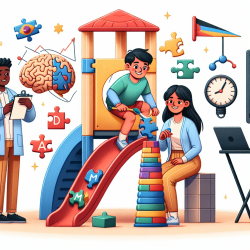The importance of timely and accurate neurodevelopmental assessments for children cannot be overstated. Recent research, titled "Development of a Pathway for Multidisciplinary Neurodevelopmental Assessment and Diagnosis in Children and Young People," presents a comprehensive pathway to improve these assessments. Here’s how practitioners can leverage these findings to enhance their skills and outcomes.
Key Outcomes of the Research
The study by Rutherford et al. (2021) identifies several critical elements that can enhance neurodevelopmental assessments:
- Adoption of a Multidisciplinary Team (MDT) approach
- Inclusion of both clinical and lived experiences in assessments
- Emphasis on understanding the child’s strengths and goals, not just deficits
- Standardization of terminology, assessment tools, and diagnostic criteria
- Implementation of time standards to reduce waiting periods
Steps to Implement the Research Outcomes
Practitioners can integrate these findings into their practice by:
1. Forming a Multidisciplinary Team
A multidisciplinary team should include professionals from various fields such as speech and language therapy, occupational therapy, psychiatry, and education. This ensures a holistic view of the child's needs.
2. Utilizing Comprehensive Assessment Tools
Incorporate a variety of assessment tools that cover multiple domains of development. Tools like the Griffiths Mental Developmental Scales and the Social Responsiveness Scale can provide a broad understanding of the child's abilities and challenges.
3. Engaging Families and Children
Actively involve families and children in the assessment process. Their insights are invaluable in understanding the child's daily life and unique strengths.
4. Standardizing the Assessment Process
Follow standardized guidelines and protocols to ensure consistency and reliability in assessments. This includes using agreed-upon terminology and diagnostic criteria.
5. Setting Time Standards
Implement time standards to minimize waiting periods for assessments. This can significantly reduce the stress and uncertainty experienced by families.
Encouraging Further Research
While the pathway developed by Rutherford et al. provides a solid foundation, ongoing research is essential. Practitioners should stay updated with the latest findings and continuously seek to improve their practices based on new evidence.
Conclusion
Implementing the outcomes of this research can lead to more accurate, timely, and comprehensive neurodevelopmental assessments. By adopting a multidisciplinary approach, utilizing comprehensive tools, engaging families, standardizing processes, and setting time standards, practitioners can significantly improve outcomes for children.To read the original research paper, please follow this link:
Development of a Pathway for Multidisciplinary Neurodevelopmental Assessment and Diagnosis in Children and Young People.










